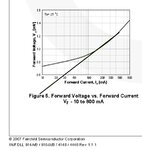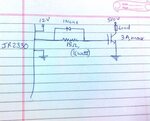chinuhark
Member level 5

- Joined
- Aug 16, 2014
- Messages
- 88
- Helped
- 1
- Reputation
- 2
- Reaction score
- 1
- Trophy points
- 8
- Activity points
- 1,051
I am using an IRS2330 3ph Bridge driver with FGA25N120 IGBTs. (No bootstrapping, 4 isolated supplies at the moment) I am confused and have searched a lot as to how the value for Rg, i.e. resistance between the HI/LO out and the gate is calculated, both value and power rating. At first thought, I thought since the IRS2330 is rated for 200mA, it will simply be 12V/200mA or 60 Ohms, but that's too high and obviously wrong. Then I realized that as the current will be decaying with time, its not going to draw constant 200mA current. Now I couldn't find a value for peak current for IRS2330, which I think would be correct (V/Ipeak = R), not sure though.
1) So what's the actual method to find Rg (magnitude and Power Rating)
2) Also please give the method for calculating Rgs (mag and Power Rating)
3) Is it OK to simply connect anti-parallel diode with Rg? Wouldn't that make RgOFF zero and cause huge discharge current during turn off? Any other problems on IGBT side due to very quick turn off? If fine, Is 1N4148 OK?
1) So what's the actual method to find Rg (magnitude and Power Rating)
2) Also please give the method for calculating Rgs (mag and Power Rating)
3) Is it OK to simply connect anti-parallel diode with Rg? Wouldn't that make RgOFF zero and cause huge discharge current during turn off? Any other problems on IGBT side due to very quick turn off? If fine, Is 1N4148 OK?




